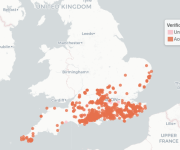DoghouseRiley
Well-known member
Hi All
I thought I had this one but although this species is moving further north...... is this Omocestus rufipes (female)?
It was moving around (quite fast), in and around a small clearing in wet (peat based) woodland, near a small stand of bracken.
Thanks, Gareth
I thought I had this one but although this species is moving further north...... is this Omocestus rufipes (female)?
It was moving around (quite fast), in and around a small clearing in wet (peat based) woodland, near a small stand of bracken.
Thanks, Gareth







